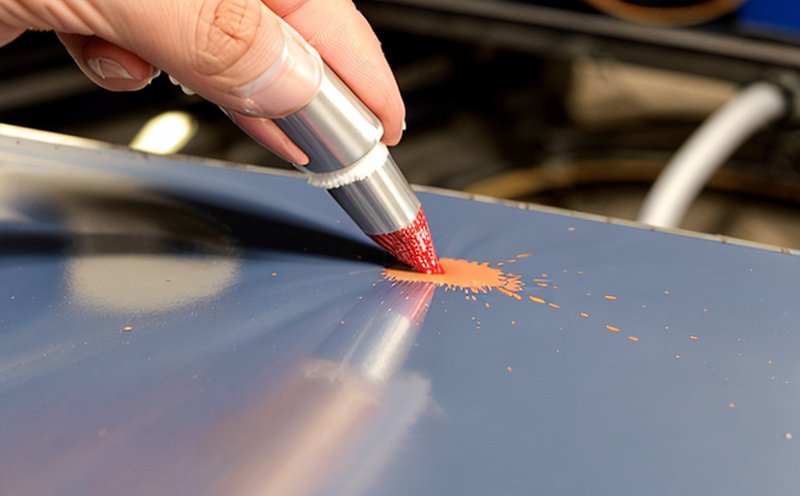ISO 2812-1 Resistance of Furniture Coatings to Liquids Testing
The ISO 2812 series provides a comprehensive framework for evaluating the resistance of furniture coatings to various types of liquids. Specifically, ISO 2812-1 focuses on determining the resistance of furniture surface coatings to immersion in different liquid media under controlled conditions.
This testing is crucial for ensuring that furniture finishes are durable and long-lasting, especially in environments where they might be exposed to spills or other forms of liquid contact. Furniture manufacturers must adhere to strict standards to ensure their products meet quality and safety expectations. The ISO 2812-1 test protocol helps them validate the performance of their coatings against real-world conditions.
The testing procedure involves submerging a coated sample in various liquids, including water, organic solvents like ethanol or isopropanol, and other relevant substances, for specific durations. After immersion, the samples are evaluated based on changes in color, gloss, adhesion, and overall appearance. This method ensures that the coatings maintain their integrity and do not deteriorate under typical use conditions.
The importance of this testing cannot be overstated, as it directly impacts consumer safety and satisfaction. Furniture with coatings that fail to withstand liquid exposure could lead to aesthetic degradation or even structural failure over time. Thus, compliance with ISO 2812-1 is essential for maintaining brand reputation and ensuring product longevity.
The test setup typically involves a specialized chamber designed to hold the coated samples in the desired liquids under controlled conditions of temperature, humidity, and duration. This ensures that results are consistent and replicable across multiple tests. The testing environment must be carefully maintained to simulate real-world conditions as closely as possible.
Compliance with ISO 2812-1 is not only a regulatory requirement but also an assurance for furniture manufacturers that their products meet the highest standards of quality and durability. It demonstrates a commitment to excellence in product design and performance, which ultimately translates into customer trust and satisfaction.
Applied Standards
| Standard | Description |
|---|---|
| ISO 2812-1 | Determination of resistance to immersion in liquids for coatings used on furniture. |
| ASTM D3359 | Determination of water resistance of coatings by immersion. |
| EN 716-2 | Determination of water resistance of clear and pigmented lacquers on wood. |
| IEC 60068-5 | Determination of temperature cycling for coatings used in electrical/electronic equipment. |
The ISO 2812 series is widely recognized and implemented globally, ensuring a harmonized approach to furniture coating testing. Complementary standards like ASTM D3359, EN 716-2, and IEC 60068-5 provide additional insights into the resistance of coatings under different conditions.
The use of these standardized methods helps manufacturers and quality control personnel to ensure that their products meet international standards. Compliance with these tests not only ensures product reliability but also enhances marketability by meeting regulatory requirements and industry expectations.
Scope and Methodology
The ISO 2812-1 test is designed to evaluate the resistance of furniture coatings to immersion in various liquids. The scope covers a range of liquid media, including water, organic solvents like ethanol or isopropanol, and other relevant substances that may be encountered in real-world environments.
The methodology involves several key steps:
- Sample Preparation: Coated samples are prepared according to the specified dimensions and specifications. These samples must be free from defects such as pinholes or bubbles.
- Immersion Process: The coated samples are immersed in the selected liquid medium for a predetermined duration, typically between 24 hours and 96 hours depending on the specific requirements of the test.
- Evaluation Criteria: After immersion, the samples are evaluated based on changes in color, gloss, adhesion, and overall appearance. Any noticeable deterioration is recorded as a failure.
The testing environment must be carefully controlled to ensure that temperature, humidity, and other environmental factors do not influence the outcome. This ensures that the results are accurate and reliable.
Compliance with ISO 2812-1 requires precise adherence to these steps, ensuring that the coatings meet the necessary resistance standards. Failure to comply can lead to substandard products that may fail under real-world conditions, compromising both consumer safety and brand reputation.
Use Cases and Application Examples
The ISO 2812-1 test is widely used in the furniture manufacturing industry to ensure that coatings are durable and resistant to liquids. Here are some practical applications:
- Furniture Manufacturers: Ensuring that their coatings meet international standards for durability and resistance.
- Quality Control Personnel: Using this test as part of the quality assurance process to catch any issues early in the production cycle.
- R&D Engineers: Developing new coatings with enhanced properties by comparing results against existing standards.
- Procurement Teams: Ensuring that suppliers meet stringent requirements for product durability and resistance.
One specific use case involves a furniture manufacturer who wants to ensure that their wood finishes are durable enough to withstand spills. By conducting ISO 2812-1 tests, they can identify any weaknesses in the coating and make necessary adjustments before production begins.
In another example, an R&D engineer is working on developing a new type of varnish for outdoor furniture. The engineer conducts this test to compare the performance of their new formulation against existing standards. This allows them to refine their product and ensure it meets market demands.
These real-world applications highlight the importance of ISO 2812-1 testing in the furniture industry. By ensuring that coatings are resistant to liquids, manufacturers can produce high-quality products that meet both regulatory requirements and customer expectations.





